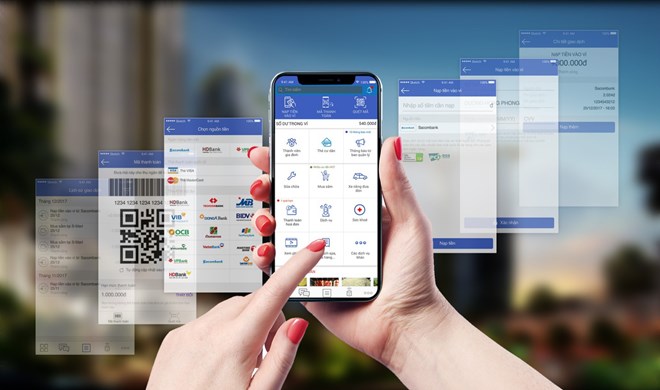 |
|
The number of non-cash payments in Vietnam has steeply risen so far this year (Illustrative photo: netnews.vn)
|
The information was revealed by theMinistry of Planning and Investment during a conference on the implementationof the Government’s Resolution 02/NQ-CP on improving the business climate andraising the national competitiveness.
Cashless payment is among the significantissues stated in Resolution 02 issued earlier this year.
Total transactions via the banks’ e-paymentsystem increased 23.23 percent in number and 17.63 percent in value against thesame period last year.
As of March 31, online payments expanded65.81 percent in number and 13.46 percent in value year-on-year.
Notably, in the period, mobile paymentwitnessed a year-on-year surge of 97.75 percent and 232 percent in number andvalue, respectively.
The growth of the number of people makingmobile payments in stores in Vietnam is the fastest, according to the GlobalConsumer Insights Survey 2019 conducted in 27 territories and countriesworldwide by PwC.
The country's mobile payments increased to61 percent of digital payments in 2019 from 37 percent in the previous year.
To date, as many as 50 banks have joinedhands with tax and customs agencies to collect taxes online, in all localitiesacross the country. Meanwhile, electricity bills can be collected via 27 banksand 10 payment service providers.
Data of the State Bank of Vietnam (SBV) showthat the country has nearly 18,300 ATMs and more than 289,000 points of sale.Up to 76 banks provide internet banking services and 44 have mobile paymentservices. There are 24 electronic wallet providers.
According to the SBV’s Payment Department,non-cash payments are becoming a trend in Vietnam and the use of cash isfalling. By the end of the third quarter of 2018, the volume and value oftransactions via ATM increased by 12 percent and 16 percent respectivelyagainst the end of 2017. The rates of payments via POS were also high at 42 percentand 29 percent, respectively.
Vietnam has been promoting electronicpayments since 2008. Only about 40 percent of the country’s 95 million peoplehave bank accounts, mostly in urban areas, while there are around 120 millionmobile phone subscriptions. -VNA
 The number of non-cash payments in Vietnam has steeply risen so far this year.
The number of non-cash payments in Vietnam has steeply risen so far this year.